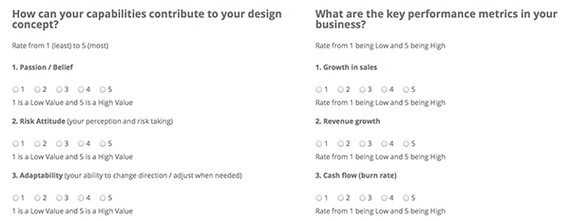Although all startup founders of design driven startups are passionate - still ninety-two percent of them will fail within three years, according to a joint Berkeley - Stanford study. While passion may be a core capability, it can hardly be called a competitive advantage, so, what characteristics separate a design-centered founder from the wannabe's?
In the early startup phases, when the founding team is everything, studies, conducted by ingomar&ingomar - consulting, of the L.A. Tech Day participants show that self-management is strongly related to adaptability and social networking with a focus on being design-centric. In fact, the study found no correlation between the traditional key venture capital metrics: Passion/belief, Adaptability, Grit, Social capital and Skill and being design-centric. No wonder venture capitalists can easily misjudge a team's potential for creating design.
"Putting lipstick on a pig," or ignoring design and adding it as an afterthought, has been shown to reduce revenues by ten percent by the Danish National Agency for Enterprise and Housing. Applying the Seven Habits of Highly Effective People (Steven Covey) to one's quiver may, therefore, be the best possible investment one can make in design to increase revenues.
Recent studies with the INDEX: Award found that design quality, as measured by the Design Index (an un-weighted average of nine design criteria,) acts as a strong indicator of venture capital investor interest in funding a design driven startup. In addition, ingomar&ingomar - consulting found that founders' focus on revenues correlated with their focus on Expression (also called styling or aesthetics,) one of the nine Design Quality Criteria making up the Design Index.
If the definition of luck is when preparation meets opportunity then, self-management may play no small part in one's success considering all risks involved in starting a new entrepreneurial venture.
Building dynamic capabilities, along with the constant advancement of the knowledge and experience, while building social capital, may provide a superior path to increasing one's revenue stream through high design quality offerings.
Managing this string of activities consistently while coordinating them with external stakeholders, getting them in the right order and finally executing them at the right time - represents a key competitive advantage.
To assist founders and other stakeholders alike, Applied Design Science has devised a Founder Assessment, or, a Myers Briggs test for founders if you will. Thinking about and rating one's Founder characteristics together with one's treasured performance metrics may save a venture by revealing misalignments.
At the start of a venture the "Jockey" (the founding team) is everything and successfully translating this into the "Horse" (the plan) will make or break the initiative. If there are gaps, it is better to realize these up front, when corrections or pivots can be realized and sunk costs can be avoided.
The road to success is long and as Tom Clancy rightly proclaimed: "An overnight success is ten years in the making." Just as with compound interest on a credit card, accrued performance over a decade can make a very big difference.

